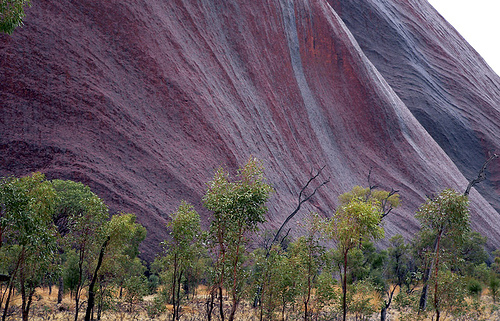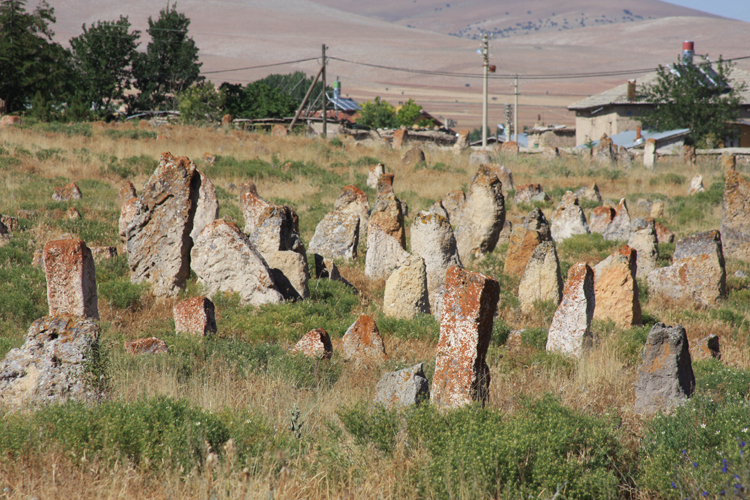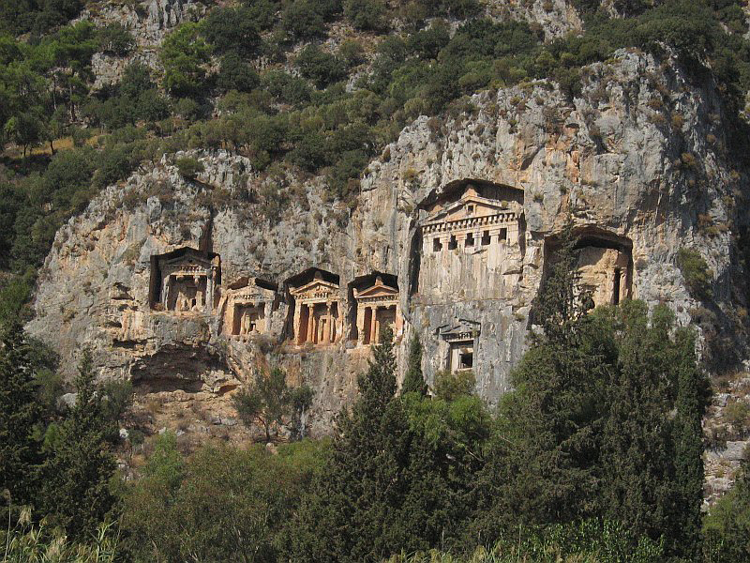I seek out places or topoi in our midst where the dead exert their power, press their demands, grant or deny their blessing, become loquacious, and in general co-habit our worlds. Such places where the dead carry on a secular afterlife (I have little to say about any other, nonsecular afterlife they may or maynot enjoy) include graves, homes, laws, words, images, dreams, rituals, monuments, and the archives of literature, whose voices always have a posthumous character of sorts. Like human dwelling, the afterlife needs places to take place in.
Robert Pogue Harrison, The Domain of the Dead, (2003) x.
Places, they say, remind them of the dead person and make them sad.
Fred Myers, Pintupi Country Pintupi Self (1986) 56.
By now, everyone was satisfied that the [composite] rock was the stomach contents of the gutted [Dreaming] Kangaroo who had been speared and must have been crawling along the creek trying to return to his ngurra Yayayi soakage.
Fred Myers, Pintupi Country Pintupi Self (1986) 66.
Would it be an exaggeration to say that we share our everyday worlds with our ancestors; that our lives are intertwined with theirs; that their residual, storied and memorialized presences loom over our landscapes? When one thinks of landscape in its multi-temporal and spatially expansive complexity, it is absolutely dazzling to see how much of the worldscapes are configured by ancestral beings and their material agencies! I particularly remember how many of the road construction efforts in Turkey have been interrupted and the routes had to be altered as the straight-lined (and block-headed) work of municipalities run into the burial of a holy person. At that instant, stories abound on how roadworkers at that very spot are inflicted by inexplicable sicknesses and suffer horrible deaths, as their arrogant machines mysteriously stop working. Ancestors reclaim the placeworld.
As we celebrate and commemorate the dead with site-specific practices of remembrance, landscapes can easily be envisioned as a habitus of ancestral beings. In the Australian Aboriginal "Dreaming" of the Pintupi country it appears that ancestors are the main protagonists of a narrativized, mythologized place-world:
 | "Both the country (the landscape and its form) and the people are thought to be "from the Dreaming" (tjukurrtjanu) the ground of being. Pintupi describe a large hill in the Kintore Range, for example, as the body of a monitor lizard, Ngintaka, who traveled from the West. At Kintore, the monitor lizard came upon a group of women and children dancing. He killed them with his tail and raising his head up in a position that represented in the shape of the landform, turned to stone (purlirringu). The hill that arose is known as Yunytjunya in reference to the exposure of the lizard's throat (yunytju). As Pintupi use the term, "Dreaming" may refer both to the specific stories and the whole creative epoch of which the stories are part. A narrative of the traveling ancestor who killed the dancing women becomes, then, Monitor Lizard Dreaming. (Myers 47) |
In this ethnographic case, the "Dreaming" operates much like Bourdieu's habitus, a generative force and the associated space of knowing, a structuring structure that maintains the shape and the significance of the world. It is usually assumed that such mytho-poetical aspect of the landscape forms a symbolic cloak draped over an existing, foundational physical landscape. From Myers's ethnographic account about the Pintupi "Dreaming" it is rather clear that the opposite is true: the Dreaming is the foundation for the place-world (or all other phenomena) to come to being. The ancestor Monitor Lizard is the agent behind the mytho-poetical as well as physical foundation of the mountain. Ancestral beings, their place-specific practices, located memories and storytelling seem fundamental to the making of the landscapes. "The Dreaming" writes Myers, "constitutes the ground or foundation of the visible, present-day world... Mythological personages of The Dreaming traveled from place to place, hunted, performed ceremonies, fought and finally turned to stone or 'went into the ground' where they remain" (49-50). This account of ancestral beings and their relations to the world is strikingly similar to the Hittite concepts of ancestors and their life-stories. In fact, springs, sinkholes, caves and rivers are understood among the Hittites as geological entities that link the everyday world and the underworld- those are the channels through which ancestors travel between the two worlds. More on this later, but Myers adds:
- "Places where exceptionally significant events took place, where power was left behind, or where the ancestors went into the ground and still remain are special sacred sites (yarta yarta) because ancestral potency is near. For almost all the landscape (hills, water holes, and so on) the country (ngurra) takes its name from The Dreaming, either from the event or from the associated rituals and songs." (50).
In this way, the eventful landscape of ancestors are continuously performed and narrated through song and dance, interlinking human bodily practices with storied places of the ancestral past. From this point, it is possible I think to argue that landscapes are not representational: they cannot be reduced to visual, or artifactual registers or indexes of subjective experience... More precisely, the categorical distinction between reality (ontology) and its image (representation) outside of and distinct from that reality is suspicious. No map exists therefore as a representation of any physical geography: the representation is part and parcel of its very reality, indeed its maker.
From many of my recent readings, the striking idea emerges that we become rooted in particular places and landscapes through the internment of our dead, and our desire t keep them closeby. As an archive of our geneaological past, landscapes are distributed geographies of ancestral beings. As Robert Pogue Harrison puts it: what is "human returns to the humus" (2003: 2)- "Because the earth has reabsorbed the dead into its elements for so many millions upon millions of years, who can any longer tell the difference between receptacle and contents?" (2003:1-2).

Hatunsaray, Konya. Cemetery.

Dalyan, Lycian Tombs (source: pbase.com)- a landscape of ancestors.
